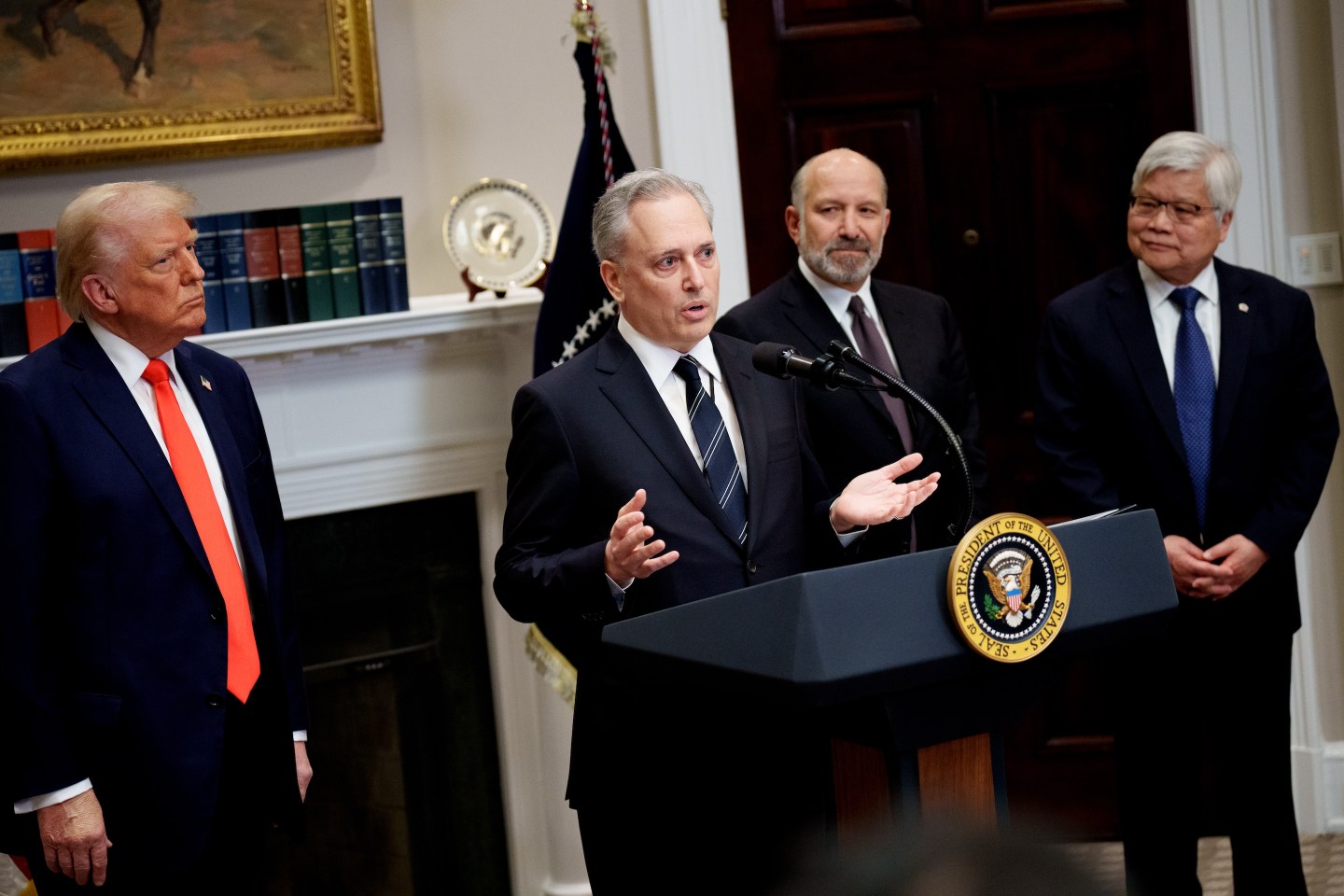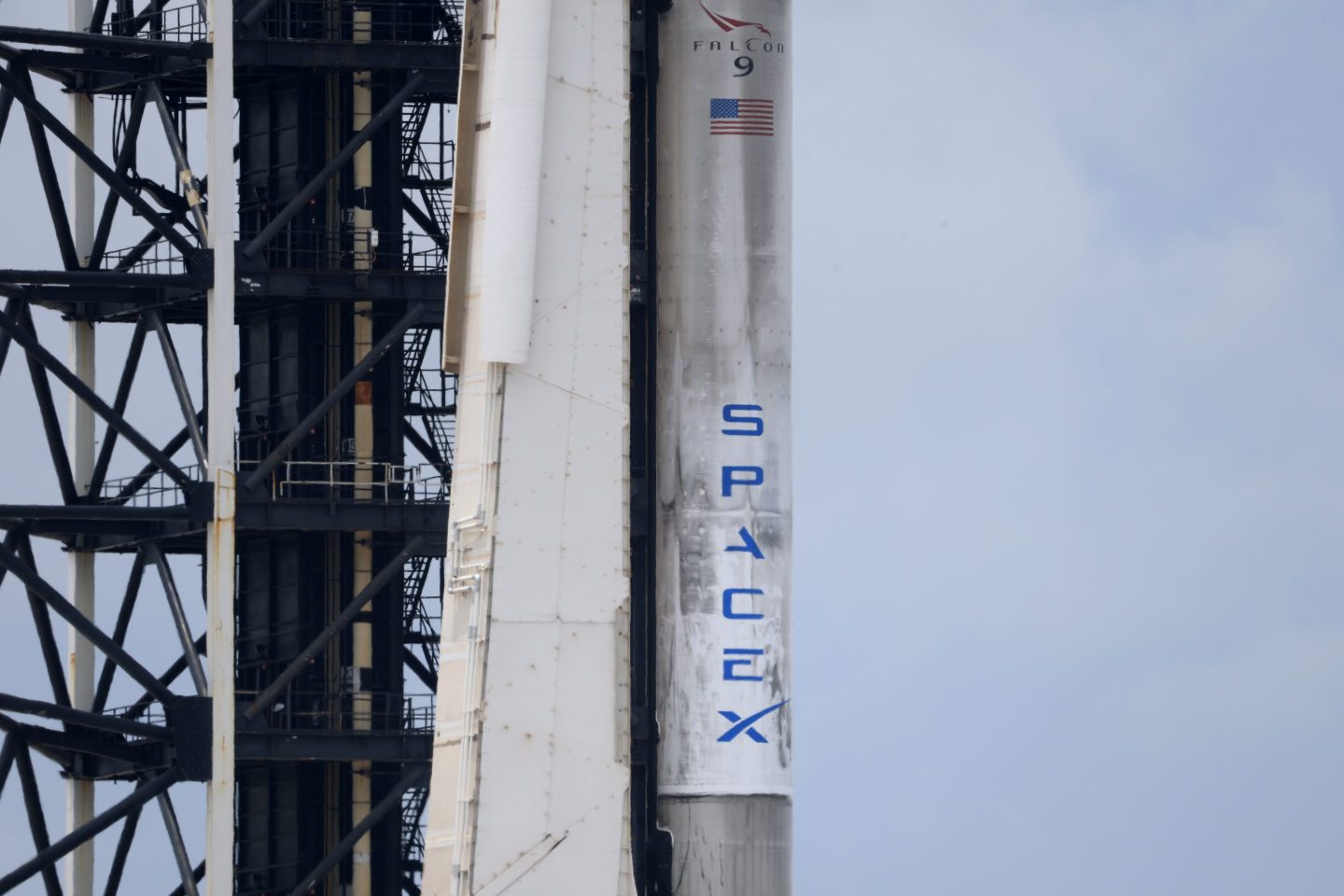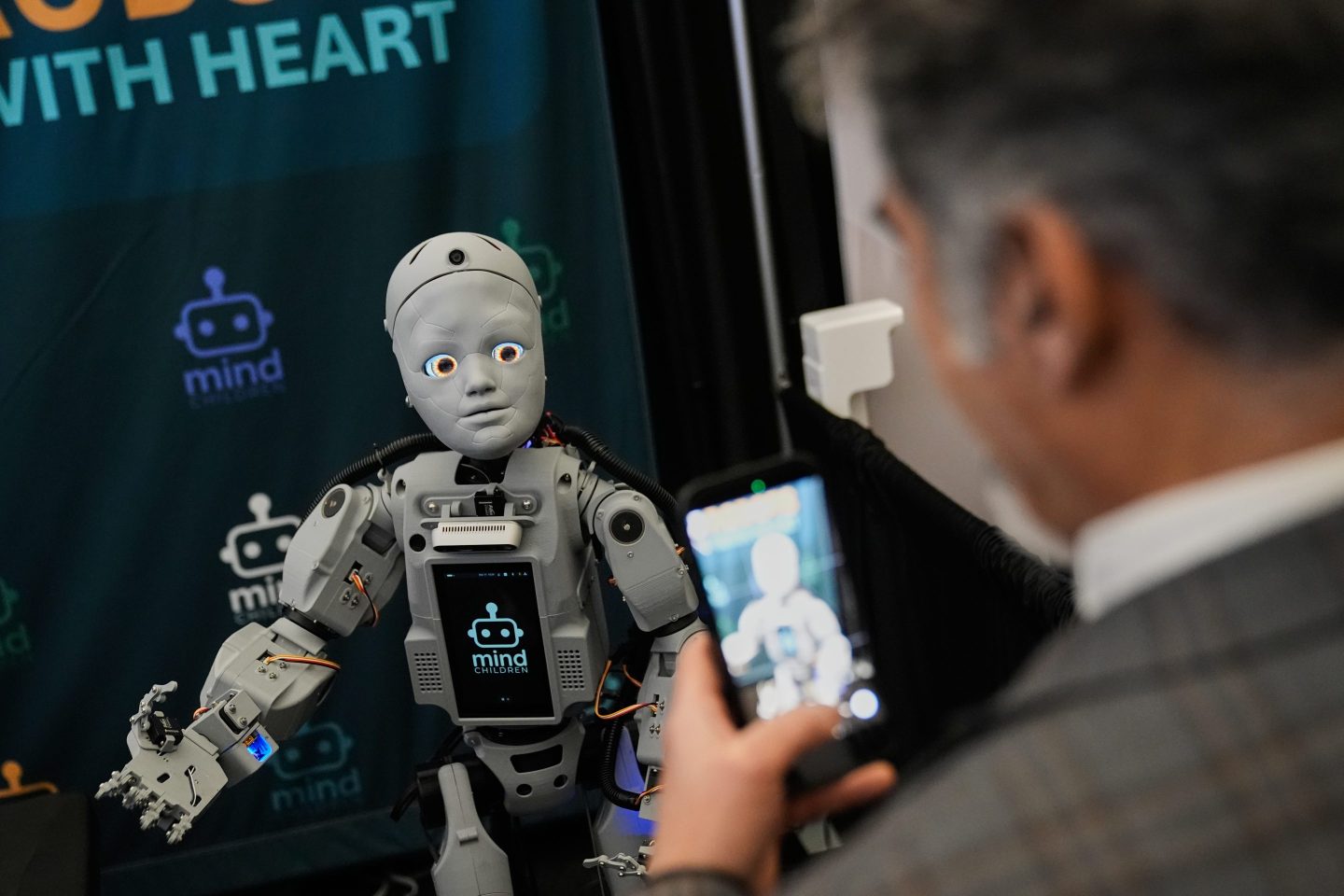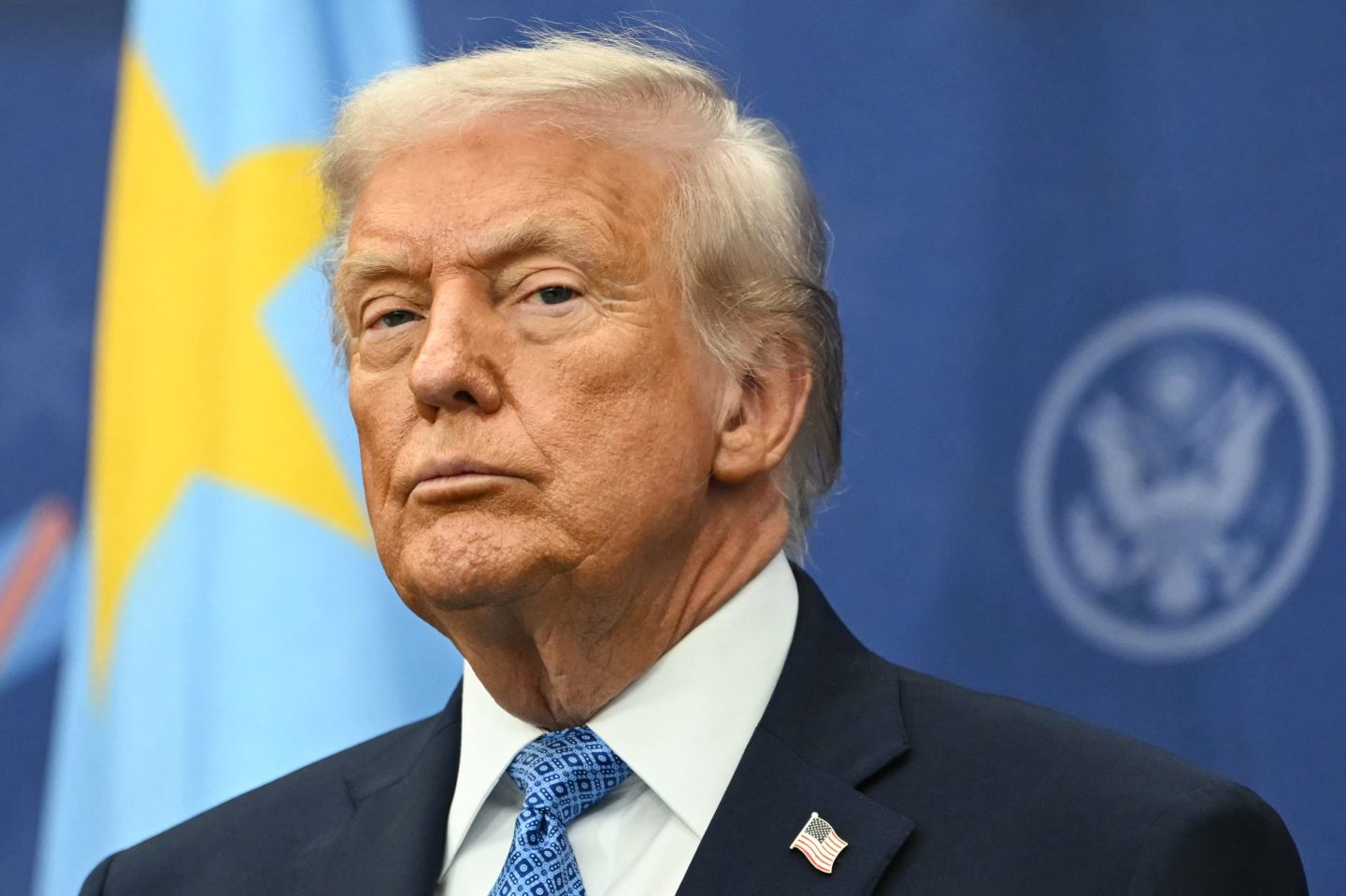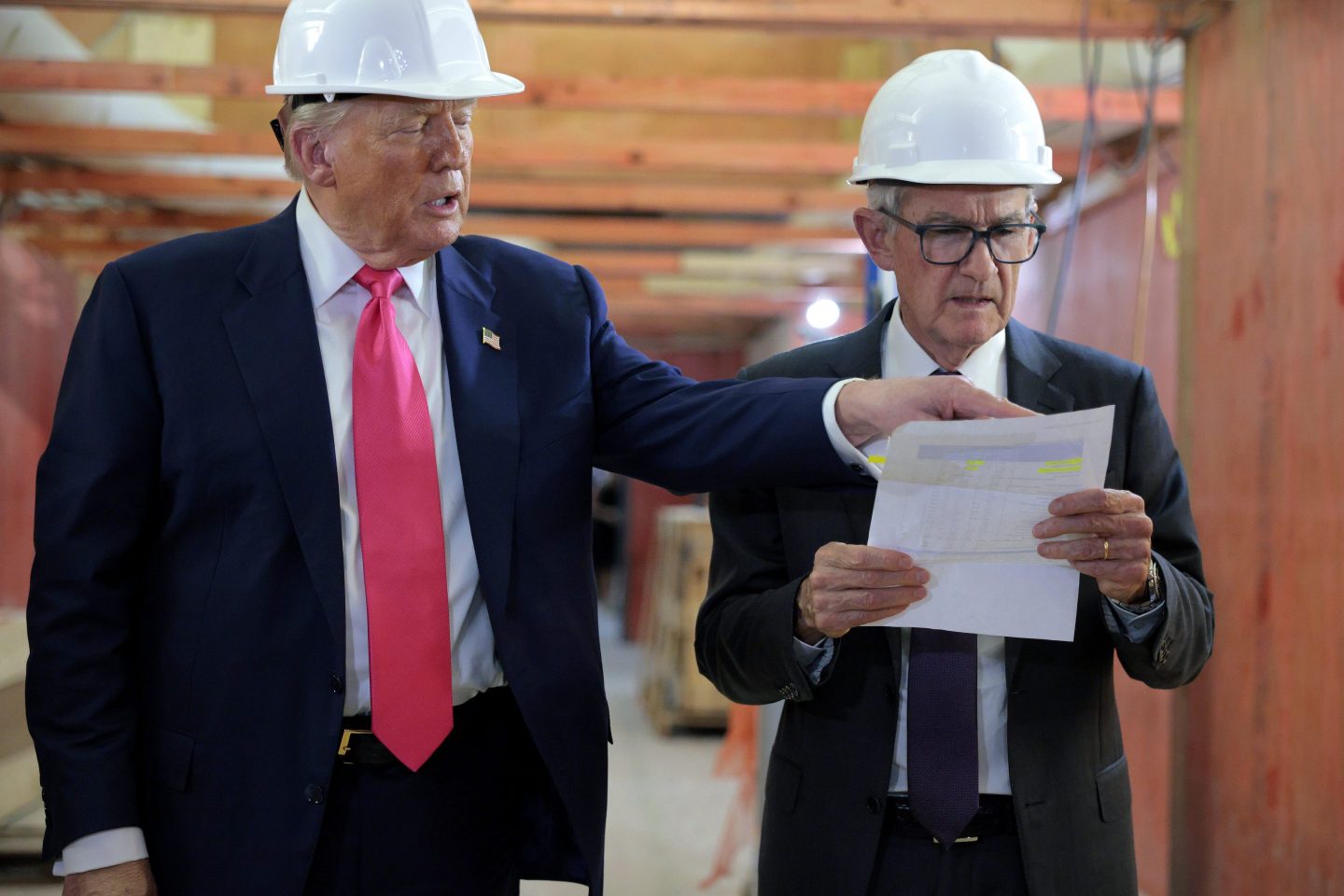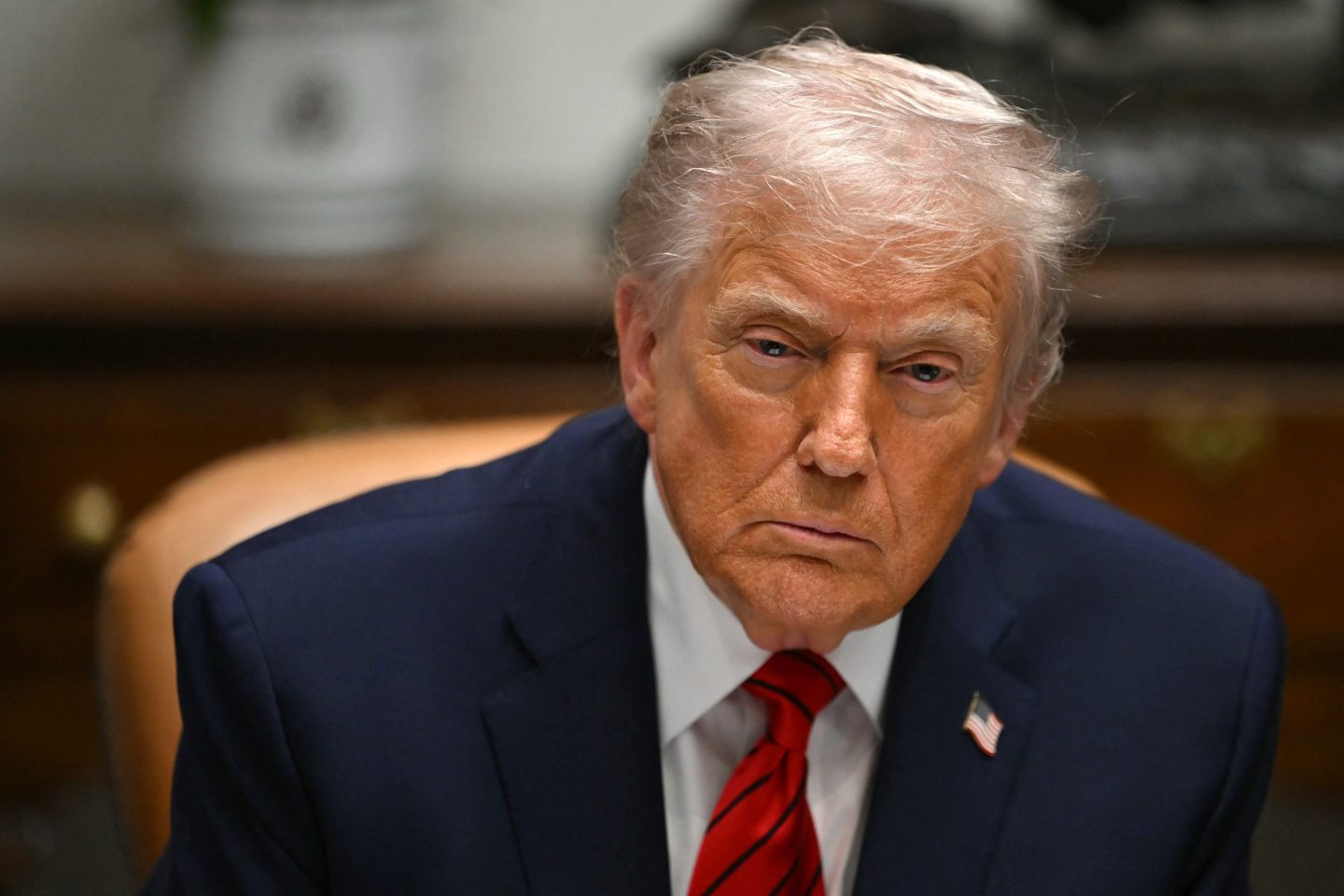No event better illustrates that Bitcoin mining is likely the most profitable legal enterprise on the planet than the Nasdaq debut this writer just attended. It was opening day for a startup launched just seven months ago that produces coins at, of all places, formerly defunct waste-coal plants in the wilds of Pennsylvania. The newly public company is poised to generate earnings you’d expect from companies 10 times its size and counts as its founders one of the unlikeliest duos in the zany land of crypto.
At 11:10 a.m., Stronghold Digital Mining started trading—coincidentally just about the instant Bitcoin itself hit a new, all-time high of $64,900. Its shares opened at $27, up some 40% from the offering price of $19, then kept running. By 1 p.m., Stronghold (symbol SDIG) hit $31. That put its market cap at $1.6 billion, dwarfing its $1 billion valuation at which the institutional investors bought stock in the underwriting. The launch marks one of the biggest coups in the annals of minting Bitcoin, in part because the pair behind the venture exhibited perfect timing. The quintupling of the signature crypto’s price in the past year, and the crackdown in China that shuttered two-fifths of the industry overnight, happened just as the partners were building the business, securing a head start, and enormously boosting the venture’s potential profitability.
The unorthodox combo that built Stronghold
I had the pleasure of interviewing the twosome in between the photo sessions (wives and kids included), the champagne-and-bagels brunch, and the ceremony at which the Nasdaq host announced the opening price spike to much applause. CEO Greg Beard, 49, is a private equity star who formerly served as Apollo Global’s head of natural resources and as a member of its management committee. His partner, cochairman, and longtime buddy is Bill Spence, 63, a quarter-century veteran of the Pennsylvania coal fields. The flamboyant Spence, sporting a white beard, slicked-back otter coif, and ponytail, did most of the talking. Asked the last time he wore a suit, Spence replied, “I can’t remember the last time, but I put one on this time to pay tribute to Wall Street and this institution.”
Spence related that he’d spent most of his career in the waste-coal business. He collected the rock-laced carbon that plants discarded from the late 19th century to the 1970s and trucked it to specialized “refuse coal” facilities that burned the low-BTU fuel to generate electricity. “We were cleaning up these coal mountains and valleys that would never have been cleaned up without that industry, and we’ll keep cleaning up by mining Bitcoin,” he says. Over time, ultralow natural-gas prices and the phaseout of the program requiring utilities to purchase their electricity at above-market prices shuttered most of the highly specialized plants. In late 2017, Spence bought one of the ailing relics, Scrubgrass, in northwestern Pennsylvania, at a distressed price. “I just wanted to ensure that the industry survived,” he told me.
But a month later, it was Spence’s survival that was in doubt. “I was on my deathbed in the ICU,” he says. “My pancreas had failed, and my doctors gave me 48 hours to live.” But Spence recovered, and he looked for new ways to make Scrubgrass a profit-spinner. “I started thinking, you need a new, artificial market for power to sustain the plant and the cleanup activity,” he says. So Spence hooked up “a few dozen” Bitcoin mining machines to his waste-coal-fired turbines and contemplated hosting outside miners looking for power.
In late 2019, Spence visited old friend Beard at his home in Manhattan. Beard had long followed Spence’s entrepreneurial exploits and hoped they would eventually team up. Beard, then in semi-retirement from Apollo, was pursuing a fresh hobby, baking croissants. “It didn’t work because you have to do something every four hours, so when are you supposed to sleep?” recalls Beard. “You’re better off buying those things,” quips Spence. “Our next business won’t be a bakery.” Spence relishes praising how the duo’s talents dovetail—reprising the culinary terms. “I’m a great entrepreneur. I can build the hamburger stand,” he says. “But it’s Greg who will turn it into McDonald’s. If it weren’t for Greg, I’d still be flipping burgers.”
The market moved in the founders’ favor, big-time
At first Beard didn’t see a great future for Scrubgrass. “I wasn’t dismissive, but it was a math question,” he notes. “Low natural-gas prices created cheap power” for utilities, making refuse coal uncompetitive. “The plant was more or less at breakeven,” says Beard. “It was anything but a cash cow. Still, I was happy to get involved even before Bitcoin took off. The state was furnishing aid, so at least we wouldn’t lose money.” Beard, like Spence, believed in the green mission and wanted to keep it going by finding a path to profits. But in the early days, financing a giant Bitcoin venture wasn’t in their sights. Today, environmental activists strongly oppose burning waste coal and decry the industry’s revival via Bitcoin. But the Keystone State still views the industry as a net plus to the environment and supports it with big subsidies.

Bitcoin’s bull run, however, radically improved the projected P&L. “The flight of 40% of production from China also helped a lot,” says Beard. “The financing landscape for Bitcoin improved greatly. It was the market that supplied the answer, that made the models work, that compelled us to go big.”
This year, Stronghold raised $105 million in equity and another $75 million in debt, funds that went toward purchasing mining equipment and an additional plant; a third is in contract. The IPO added $129 million to its balance sheet. Stronghold’s S-1/A filing discloses that if the industry remains its current size, Stronghold will control around 5% of global Bitcoin output by the time it’s fully up and running in late 2022. By Fortune’s estimates, at Bitcoin’s current price of over $68,000, the company will be generating around $1 billion in revenue.
Stronghold could be as profitable as companies 15 times its size
But the most astounding number is its projected profitability. The S-1 suggests that Stronghold will produce Bitcoin at an all-in, pretax cost, including capital expenses and overhead, that could be in the $4,000-per-coin range—that’s for a product selling at 12 times that amount. My estimate is that, once again, if the industry’s total capacity remains this size and Bitcoin stays in the $60,000 range, Stronghold will notch annual pretax earnings of $750 million, or perhaps more. That’s about what Texas Instruments, Nvidia, Union Pacific, and Regeneron made in the past four quarters. And in revenues, they’re all at 15 to 30 times the anticipated $1 billion in sales for Stronghold.
Of course, even if all goes well, those profits will take a full year to reach the gigantic numbers signaled in the filing. The Bitcoin world changes fast and could move against Stronghold. The crypto could crater once again, and miners lured by the bonanza could flood the market, lowering the piece of the industry pie chart that Stronghold would garner. The adventures of Spence and Beard evoke the spirit of the wildcatters of old. And for now, it looks like they’ve hit a gusher.
More finance coverage from Fortune:
- 4 things to know about stimulus checks in 2022 and beyond
- GameStop report from SEC sheds new light on meme stock mania—conspiracies and all
- How high Goldman Sachs predicts home prices will go in 2022
- Mortgage rates may spike 30% next year, according to a new forecast
- These markets are expected to be the hottest for real estate in 2022
Subscribe to Fortune Daily to get essential business stories straight to your inbox each morning.


